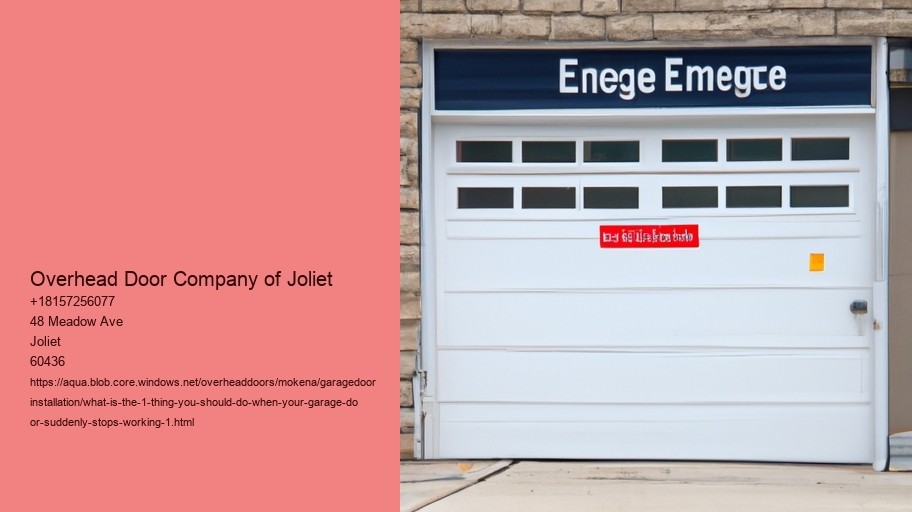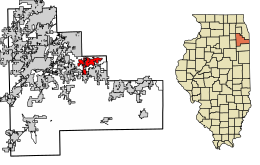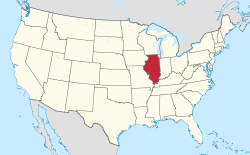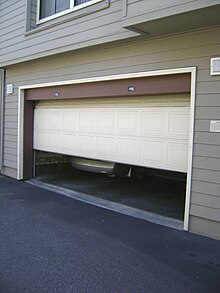Identify the Type of Garage Door and Opener
It is vital to identify the kind of garage opener and door that you are using before you start troubleshooting. .
Garage doors are generally classified into a few categories according to their design and operation.The most commonly used kinds are roll-up, sectional and tilt-up doors.Sectional doors are made up of panels joined by hinges, which allow the door to bend as it closes and opens on an upright track.Roll-up doors, which are typically found in commercial environments made from panels that fold up into a coil.
The tilt-up door, on the contrary is a solid single piece that opens by tilting outward and up.Belt drive garage door openers are quieter however they utilize a rubber band rather than chains. They're a fantastic choice for attached garages. Garage door openers with screw-drive make use of a rod made of steel for moving the garage door. This is the perfect option for noise and cost.
Once you have identified your garage door opener type, the next step is to carry out the basic test for common issues.Ensure there's power to the opener by examining the plug as well as the breaker.Inspect the manual release cord to make sure it hasn't been pulled, which would disconnect the door from the opener.Examine the tracks of the door and rollers for any obstructions or damaged areas and clean any debris.
If you need to, grease the moving parts. Lack of lubrication may cause them to become stuck or stick.If the door still doesn't operate, think about resetting your opener.This will often fix electronic issues or faults.Consult the manual for your opener to find specific reset instructions as the process may differ between models.Many modern openers come with reset buttons, but others may require unplugging and reconnecting.
In some cases it could be more complex for instance, a damaged spring or worn-out motor, which would require professional assistance.Springs are in a high tension, and they can be dangerous to repair if you don't have the right tools and expertise.
In conclusion, when your garage door suddenly stops working, it is
Examine for debris or obstructions.
When the garage door abruptly ceases working, it can be difficult and frustrating particularly if it's regular part of your life.
This simple, but efficient step is a great way to determine the issue, and then restore functionality to your garage.Garage doors work using a set consisting of rollers, tracks and other moving parts that have to be free of obstructions in order to operate smoothly.Over time, dirt, leaves, small rocks, or other debris can build up along the tracks or get stuck in the rollers.Even small obstacles can hinder the door from opening or closing properly.Therefore an inspection thorough of these parts should be your first course of action.
Begin by examining the tracks both on the left and right side of the door. Look for obvious obstructions or debris build-up. If you spot anything unusual, such as a twig, or a rock that is stuck in the track. Take it out with care.
The issue may not always be obvious. To determine whether the issue is there, try running your hand down the track. Also, ensure that the tracks are aligned. This is because misalignment could also result in a jammed door.The next step is to inspect the rollers as well as hinges.These components should be able to move without resistance.If they're sticky or stuck, it might be the result of accumulation of grime or rust.In such cases cleaning and lubricating them will usually resolve the issue.Use a gentle cloth or brush to wash away any dirt and apply a suitable lubricant to ensure that they move freely.
It is also essential to inspect the area surrounding the door itself.Sometimes things that are kept in garages can be moved or fall off, blocking the route of the door.Ensure that the space is free of obstructions and nothing is obstructing the door's motion.
If, despite clearing any apparent obstructions, the door continues to refuse to open, consider checking the sensors.
The sensors on modern garage doors could malfunction when they're dirty, or not aligned properly.By keeping your walkway clean and by avoiding obstacles, you will save yourself the hassle of calling a professional to resolve a problem that's usually straightforward.
Check the wall switch and remote control
It's crucial to examine the wall switch and remote control.
These components are typically the reason for the garage door not responding, and performing a thorough check could save you time and possibly avoid unnecessary expenses.First, consider the remote control.This handheld device is your primary tool for operating the garage door without direct physical interaction.Over time, remote controls can experience issues such as drained batteries, signal interference, or even internal damage.Start by replacing the batteries with new ones.It might seem simple, but dead batteries are a common reason for a garage door not responding.If the problem persists after replacing the batteries, try reprogramming the remote according to the manufacturer's instructions.Additionally, ensure that the remote is within the recommended range and that there are no obstructions blocking the signal.
The wall switch is a critical component of the garage door's installation.
If you're comfortable then open the switch panel to check whether the wires are damaged or disconnected. The wall switch or the remote control might be working correctly however the door still not working. This could indicate a problem with the garage opener unit, or with other components such as sensors or door tracks.
What is the #1 Thing You Should Do When Your Garage Door Suddenly Stops Working? - mallet
- length
- Southern Illinois
- profession
This initial examination will help you save time and provide confidence that you've taken the right steps to identify the issue.
Check the door's balance manually
If your garage door suddenly stops functioning and then it stops working, it can be painful and inconvenient.The garage door is an essential part of your home, providing security, protection from the elements, and a simple access to your vehicle as well as storage area.
The first step you must take when faced with a malfunctioning garage door is to check the door's balance.This easy, yet efficient procedure can assist in identifying potential issues and prevent further damage to the door or any of its components. Balance of the garage door is vital to its safe operation. A door that is not balanced can create more serious issues, including misalignment and broken springs.
What is the #1 Thing You Should Do When Your Garage Door Suddenly Stops Working? - Democratic Party
- mallet
- Homer Glen
- Democratic Party
To check the door's balance, begin by disconnection of the garage door opener.
The majority of garage doors come with a release device that can be found on the red cord or handle. Once the door has been removed from the motor lift it to waist-high and let it go. A well-balanced door will remain in place or move at a slow pace.If you observe that the door is not properly balanced it is essential to address the issue promptly.Door balance issues are usually related to the tension of the springs, which is a risk to adjust by yourself due to the high tension they are under.It is recommended to seek assistance from a professional for adjusting the springs and make sure that the door is properly balanced correctly.Doing so not only resolves the immediate problem but also will increase the longevity and stability of your garage door system.
In conclusion, manually testing the door balance is a crucial initial step when your garage door stops working suddenly.
This method helps identify the cause of the issue. It can be traced to the door's balance or somewhere else in the system.By being aware of the importance of balancing your door and addressing any issues promptly, you can prevent any damage to your garage door and ensure that the garage door functions efficiently and safely for many long time to follow.What is the #1 Thing You Should Do When Your Garage Door Suddenly Stops Working? - Democratic Party
- remote control
- fee
- board of directors
Tracks and Rollers
If you're confronted with a garage door that is suddenly refusing to function, your first instinct might be to get scared or think of the most difficult technical issues.However, often the solution lies in a quick inspection of the tracks and rollers.This essential check will make a difference in time and cost-intensive repair expenses which is why it's the first factor you must consider when your garage door stops working.
The rollers and tracks of the garage's operation system are critical. The tracks are the metal rails that control the door when it opens, and the rollers travel through the tracks.
As time passes, these components may become dirty, misaligned, or worn out, resulting into operational issues.Begin by looking over the track for obstructions. Dust, grime or even small pieces of debris can be accumulating, which causes rollers to struggle to move across the track. Cleansing the tracks with an aqueous cloth will resolve the problem.
The next step is to check the alignment of the tracks.Tracks should be perfectly aligned and parallel to each other.If they appear bent or out of alignment, the door could jam.You can gently tap the misaligned portions back into place with a rubber mallet.However should the damage is severe and extensive, you should consult a professional to adjust them properly to ensure safety and function.
The rollers may wear out over time. This is especially true for those made of plastic.
Metal rollers that have bearings last longer and offer smoother operation.Furthermore, lubrication is a vital role in maintaining the smooth operation of the tracks and rollers.Applying an oil based on silicone could lower friction and stop wear.Make sure to lubricate all moving parts, including springs and hinges to make sure that your garage door is operating effectively.
When you make sure that the components are well-lubricated and aligned, it is possible to make sure that the garage door is restored to full function.
Taking the time to check and maintain regularly these components will also help to prevent problems in the future, and prolong the life of your garage door's system.Verify for visible damage, or wear
If garage doors stop functioning, it can be annoying and disconcerting especially if you're just getting out of the house or trying to ensure your home is secure for evening.While there could be many reasons behind the issue, one of the most practical and immediate options is to search for signs of damage or wear.This initial examination can reveal the root cause of the problem, allowing the door to be repaired quickly and efficiently. solution.
The garage door is a complex system that is made up of a variety of components, including springs, cables as well as rollers and tracks, each of which plays essential roles in its seamless operation.Over time, these components can experience wear and tear from regular use and exposure to environmental factors.
You can easily identify obvious defects by conducting a visual inspection.Begin by examining springs. They are responsible for raising and lower the door. Find signs of wear and rust. A broken or worn spring could make the door inoperable, therefore it is essential to address this issue immediately. The next step is to check the cables for fraying or broken strands.
Another thing to look at is the door itself.Look for any obvious bents, dents, or warpings that could impact the door's balance and alignment.Pay careful attention to the weather stripping that is located at the bottom of the door, since damaged strips can prevent the door from sealing correctly.
Additionally, ensure that the sensors of the door are clean and aligned, as misalignment or dirt may interfere with their functions and cause the door to stop functioning.A visual inspection can be beneficial, but it's important to be aware that not all problems are immediately obvious. If you don't notice any obvious indications of damage or wear, you may need to consult with a specialist to pinpoint the issue.
This approach will not only enable you to identify the issue quicker, but will allow you to take steps to repair the functionality of your garage door.
You can prolong the life of your garage door by being proactive.Check the Springs and Cables
When your garage door suddenly stops functioning and then it stops working, it can be painful and inconvenient.One of the most essential actions to take when faced with this issue is to assess the springs as well as cables.These components are vital to the functioning of your garage door, and any issues with them are usually the root cause behind malfunctioning door.
Springs play an important role in the operation of your garage door, neutralizing its weight.When the door is in motion, the springs support the majority of the weight allowing the door to be opened and closed smoothly.There are typically two types of springs: the torsion and extension springs.Torsion springs are mounted over the garage door and are twisted to store energy. While extension springs are mounted to either side of the door and can stretch to give the needed force.
Over time over time, these springs may wear out, break, or lose tension, which can lead to problems with operation.Similarly, cables are essential since they work with the springs in order to raise and lower the door.They are usually made of steel and are designed to withstand significant tension.However they may suffer due to wear and tear, fray or snap due to the immense pressure they are under.A broken cable can result in the door becoming unbalanced or even completely inoperative.
In assessing the springs and cables, start by visually taking a look at them.Look for signs of rust, wear or fraying.If you notice a broken cable or spring it is essential to stay clear of opening the door until the issue is addressed, as forcing it could cause more injury or result in an accident.If springs look in good shape but the door is still not functioning, it may be that they've lost tension and need adjustment.
It is crucial to stress security when it comes to garage door components.
Springs and cables are under high tension and can cause serious injuries when mishandled.If you're not experienced in garage repair, it's advisable to consult a professional technician.They have the necessary tools and knowledge to properly fix or replace these components to ensure the garage door runs properly and safely.In conclusion, when your garage door suddenly stops working, assessing the springs and cables is a key step in diagnosing the problem.Understanding their role and potential issues can help you determine whether a simple adjustment is needed or if professional intervention is required.Taking prompt action not only restores functionality but also ensures the safety and longevity of your garage door system.
You Need to Call a Professional Technician
Your garage door may suddenly stop working, causing you to waste time. It could even make your home vulnerable.
It's tempting to pick up a toolbox to try a fix on your own but it's best to contact an expert. This is not just about your safety, but also provide a lasting and more effective solution.Garage doors are complex systems composed of various components such as springs, cables, tracks, and electronic parts.Each of these elements plays a crucial role in the door's operation, and a malfunction in any part can cause the entire system to fail.Without proper knowledge and experience, attempting to fix these issues can be dangerous.For instance, garage door springs are under high tension and can cause severe injury if handled improperly.Professional technicians are trained to deal with these risks safely, using the right tools and techniques to handle repairs.
A technician who is a professional adds a degree of know-how and experience to the table that laypeople do not possess.
They can quickly diagnose the issue and identify whether it's a minor problem, like a misaligned track, or something more serious, like a broken spring.This expertise not only saves you time but also prevents the potential for further damage that can occur with incorrect handling.Professionals also have access to high-quality parts and can ensure that replacements match the specifications of your existing garage door system, leading to better functionality and longevity.A skilled technician will also be cost-effective over the long run. While an DIY approach may seem cheaper at first however, it could lead to expensive and costly repairs later on.
A lot of technicians offer warranties on their work giving you peace of mind knowing that if something goes wrong, you're covered.Calling a professional will reduce time and cost. In trying to comprehend the workings of garage doors, buying the correct tools and perform repairs could take hours or days. A technician can solve the problem quickly and allow you to get back to normal activities.
The desire to repair the garage door yourself is very strong. But, calling a professional is the best solution, most reliable and safest alternative. Their experience as well as access to top quality parts for replacement and their ability to complete quick and accurate repairs ensure that your garage runs well and safeguarding your home.


















